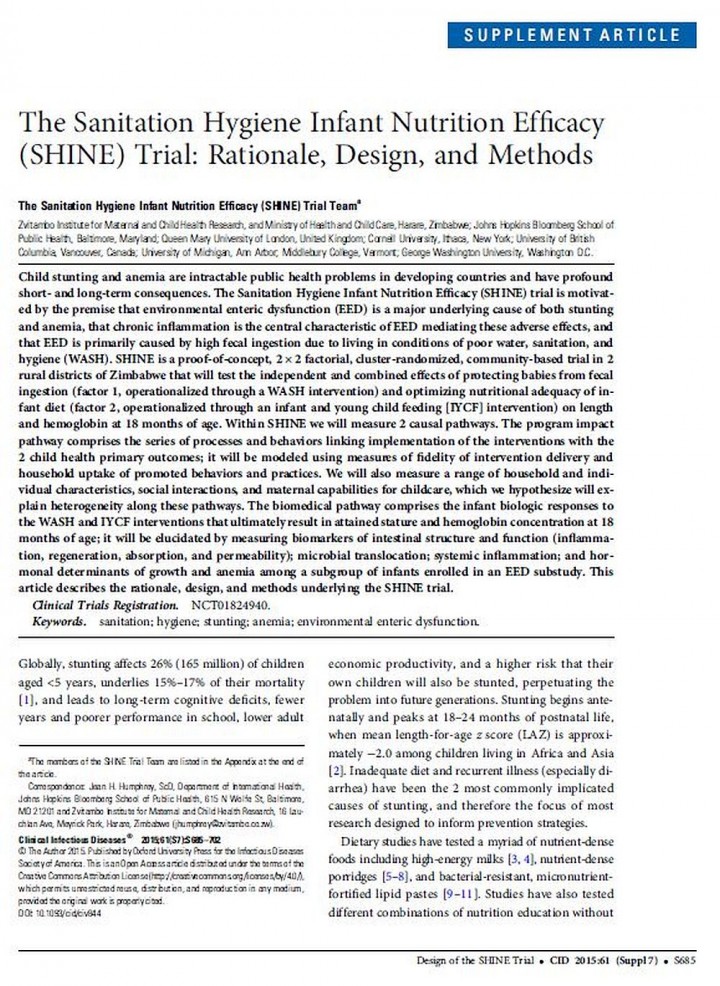The sanitation hygiene infant nutrition efficacy (SHINE) trial: rationale, design and methods
SHINE Trial Team (2016)

Published in: 2016
Pages: 18
Publisher:
Oxford Journals
Author:
SHINE Trial Team
Uploaded by:
SuSanA Admin
Partner profile:
common upload
3011 Views
0 Downloads
Child stunting and anemia are intractable public health problems in developing countries and have profound short- and long-term consequences. The Sanitation Hygiene Infant Nutrition Efficacy (SHINE) trial is motivated by the premise that environmental enteric dysfunction (EED) is a major underlying cause of both stunting and anemia, that chronic inflammation is the central characteristic of EED mediating these adverse effects, and that EED is primarily caused by high fecal ingestion due to living in conditions of poor water, sanitation, and hygiene (WASH). SHINE is a proof-of-concept, 2 × 2 factorial, cluster-randomized, community-based trial in 2 rural districts of Zimbabwe that will test the independent and combined effects of protecting babies from fecal ingestion (factor 1, operationalized through a WASH intervention) and optimizing nutritional adequacy of infant diet (factor 2, operationalized through an infant and young child feeding [IYCF] intervention) on length and hemoglobin at 18 months of age. Within SHINE we will measure 2 causal pathways. The program impact pathway comprises the series of processes and behaviors linking implementation of the interventions with the 2 child health primary outcomes; it will be modeled using measures of fidelity of intervention delivery and household uptake of promoted behaviors and practices. We will also measure a range of household and individual characteristics, social interactions, and maternal capabilities for childcare, which we hypothesize will explain heterogeneity along these pathways. The biomedical pathway comprises the infant biologic responses to the WASH and IYCF interventions that ultimately result in attained stature and hemoglobin concentration at 18 months of age; it will be elucidated by measuring biomarkers of intestinal structure and function (inflammation, regeneration, absorption, and permeability); microbial translocation; systemic inflammation; and hormonal determinants of growth and anemia among a subgroup of infants enrolled in an EED substudy. This article describes the rationale, design, and methods underlying the SHINE trial.
Bibliographic information
SHINE Trial Team (2016). The sanitation hygiene infant nutrition efficacy (SHINE) trial: rationale, design and methods. Oxford Journals
Filter tags
Case studies in other formats English Sub-Saharan Africa














